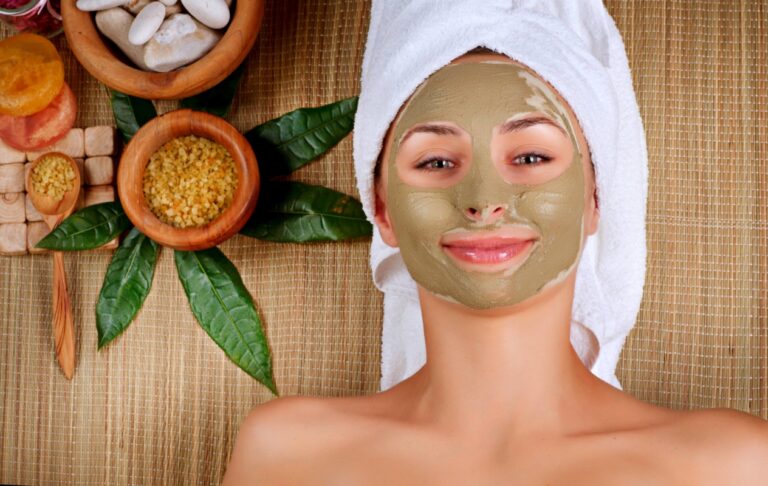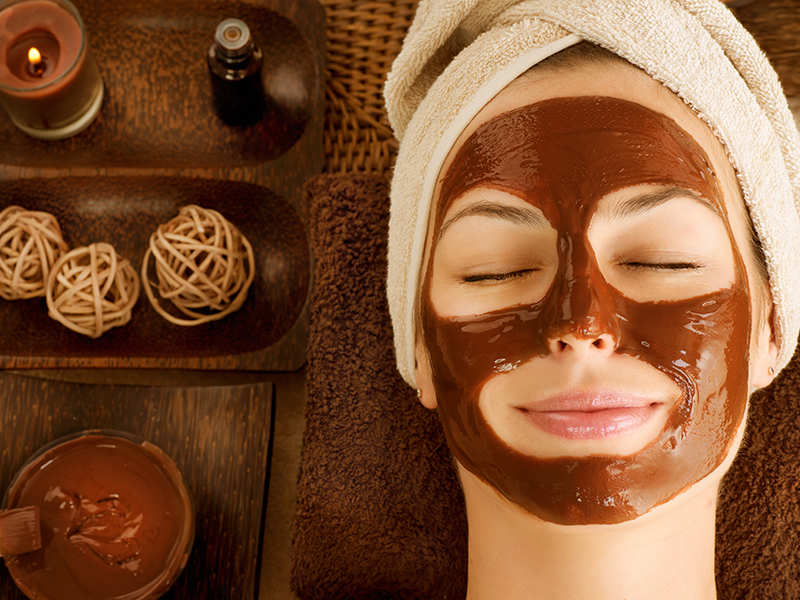Modern life makes it easy to forego tried-and-true forms of self-care in favour of more expedited alternatives. Even amid all the mayhem, making time for skincare might have a huge impact. Effective skincare regimes now include face masks since they are a fast and plentiful approach to rehydrating and revitalising the face. If you want radiant skin, try creating your face masks. This detailed guide will show you how to do it. Learn about 12 carefully DIY face masks to make your skin more glowing.
The Science Behind Glowing Skin
A face mask is a must-have for achieving radiant skin. Environmental aggressors like pollution, UV radiation, and harsh weather constantly attack our skin. Over time, these factors can leave our skin dull, dehydrated, and discoloured. Face masks, especially those infused with potent ingredients, can help combat these effects by hydrating the skin, neutralising free radicals, accelerating cell turnover, and improving overall skin health. You can even create your mask tailored to brighten and exfoliate your skin.
DIY Face Masks: Unleashing Nature’s Potency
Creating your face masks at home using natural ingredients saves you money and guarantees the purity and safety of your skincare routine. By avoiding synthetic chemicals and tapping into the power of everyday kitchen items, you can take control of what you apply to your skin. Here, we present 12 DIY face masks, each meticulously crafted to lighten and brighten your skin naturally:
Aloe Vera & Vitamin E Face Mask for Glowing Skin
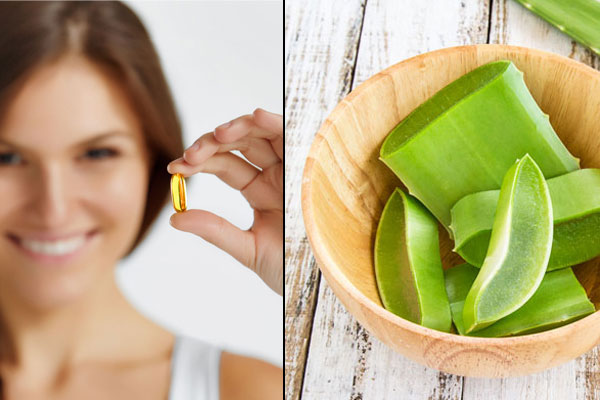
A potent aloe vera and vitamin E pack for the face will nourish your skin and leave it silky smooth. Vitamin E’s anti-inflammatory, anti-ageing, and skin-conditioning properties make it essential to any skincare regimen. Mix one vitamin E supplement with two teaspoons of aloe vera gel. Put this delicious mixture on your face and let it dry. Rinse it off with cool water. You will have beautiful, revitalised skin in an instant. Nobody dislikes it!
How to Use
- Mix one vitamin E tablet with two tablespoons of aloe vera gel.
- Step two is to wash your face with the rich mixture and let it dry.
- Wash it off with cold water.
Besan (Gram Flour) & Aloe Vera Face Mask

A Besan face pack is one-of-a-kind; that much is certain. Your grandmother’s notebooks include the formula for this magical elixir. Aloe vera contains many vitamins, minerals, and antioxidants. When used with besan, it helps maintain healthy, supple skin. It also removes sunburn, tan, and dark spot marks to get cleaner skin.
How to Use
- Take 1 teaspoon of besan.
- Give the patient a teaspoon of aloe vera gel.
- Mix until you have a paste.
- Allow 10 minutes after applying.
- Apply a moisturiser after washing it off.
- For optimal results, use this face pack three times a week.
Turmeric & Lemon Face Mask
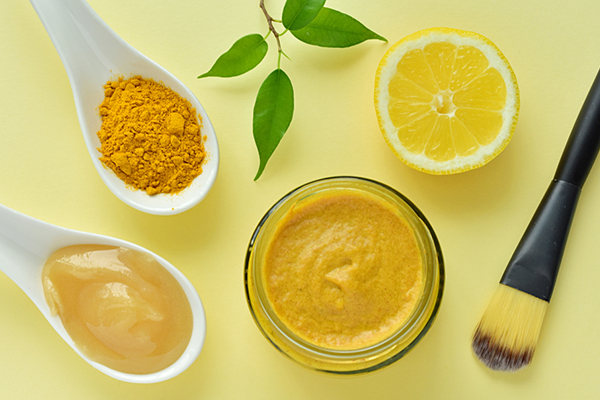
The gentle exfoliation and oil-removal properties of the lemon and grain flour blend make this a great facial cleanser. Adding turmeric to a face pack recipe may help control oil production, clear up acne, exfoliate dead skin cells, soothe irritated skin, and stave off future infections.
How to Use
- Gramme flour, two tablespoons’ worth.
- Eat half a teaspoon of turmeric daily.
- I would want half a teaspoon of lemon juice, too.
- To make a paste, add a little water and mix well.
- Take a half-hour to relax after dressing.
- Apply a moisturiser after washing it off.
- To maximise its benefits, use it twice or thrice weekly.
Cucumber & Honey Face Mask
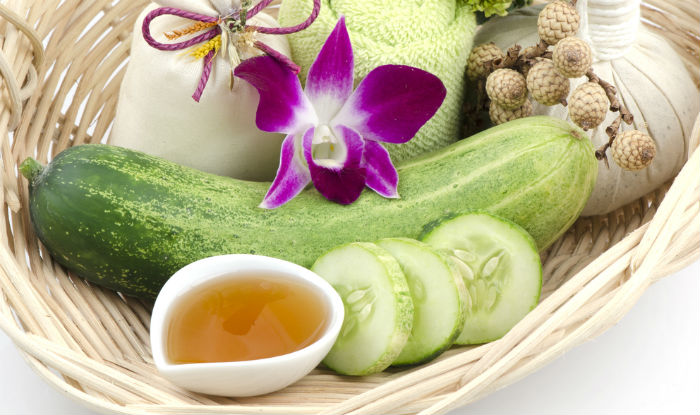
Many chemicals used in skincare have been on the market for quite some time due to their many valuable properties. Cucumber is a common component in skin care products known for its cooling and moisturising effects. Use the refreshing and nourishing cucumber and honey mask on troublesome skin.
How to Use
- Mix half a peeled and mashed cucumber with one spoonful of raw honey.
- After applying the mask, please wait 15 to 25 minutes before removing it.
- Before patting dry with a fresh towel, rinse with lukewarm water.
Matcha Tea & Honey Face Mask
:max_bytes(150000):strip_icc()/3-23a06e2cab8549b1a37cb8e0a398d766.jpg)
Because of its high antioxidant content and anti-inflammatory characteristics, matcha is good for your skin and overall health. Try this do-it-yourself mask to calm redness, even skin tone, minimise oiliness and moisturise.
How to Use
- Mix matcha powder, honey, and hot water into a paste-like mixture.
- Wait for it to dry after applying it to your face.
- You will be radiant after washing with warm water.
Avocado & Almonds Face Mask

Almond oil may help conceal under-eye bags and dark circles. Some people find that almond oil helps brighten darker skin tones. In addition to protecting against UV rays, it slows the ageing process. Guacamole and avocado skin masks are two reasons for avocados’ widespread acclaim. Eat more avocados to protect your skin from the sun and slow ageing. No matter how old or green your avocado is, it will still have a way of bringing out your skin’s inherent glow and making you seem years younger.
How to Use
- For the avocado paste, peel and pit half of the avocado.
- Add 1 spoonful of manuka honey and 1 tablespoon of almond oil to a handheld blender.
- Blend until smooth. Wear the mask for 15 to 20 minutes after washing your face.
- Put on some moisturiser and wash it off with lukewarm water.
Oats, Yoghurt & Honey Face Mask

Acne masks may be very drying for certain people, especially those with extremely sensitive or dry skin. Instead, try a mask recipe that calls for oats, yoghurt, and honey if you want something to help you unwind. Oats are an excellent, all-natural option for cleaning. In addition to exfoliating, they have anti-inflammatory properties. Yoghurt has several skin-beneficial components, including protein, calcium, and vitamin D. It helps balance skin tone and hydrates the skin. Honey is an excellent moisturiser, so try putting it on dry skin.
How to Use
- Cook and chill one serving of oats to make it.
- Mix 3 tablespoons of plain yoghurt, 1 tablespoon of honey, and half a cup of cooked oats until thick.
- Apply it to your skin and wait 10–15 minutes.
- After rinsing off the mask with cold water, you can anticipate a refreshing and harmonious sensation on your skin, a sign of hydration and balance.
Lemon and Yogurt Face Mask
Once again, we offer a timeless mask lesson for you to follow. Yoghurt and lemon juice make an effective lifting and tightening mask. This mask is easy and practical and prevents acne, scars, and age spots.
How to Use
- Mix half a lemon juice and one spoonful of full-fat Greek yoghurt.
- After washing and drying your face, combine the ingredients well and apply.
- After 30 minutes, wash it off with water.
Multani Mitti & Rose Water Face Mask
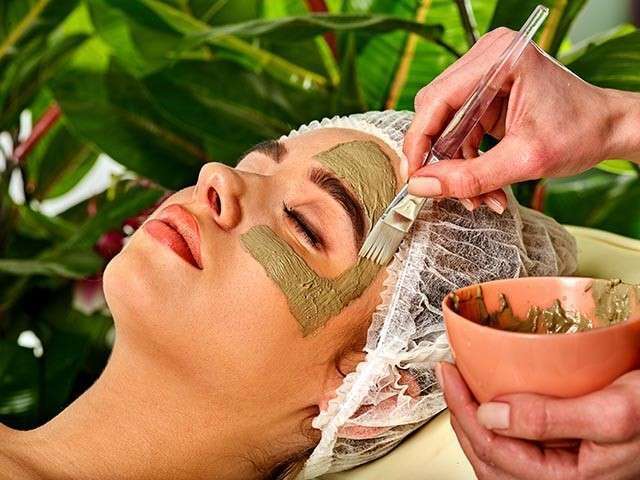
This face pack is ideal for oily or acne-prone skin types since it controls oil production and prevents acne. Potential side effects include improved skin texture, decreased pore size, and a faint sheen to the face. This rosewater and Multani Mitti face pack can help improve your skin’s texture and tone.
How to Use
- When making the Multani Mitti, combine two teaspoons with 1 teaspoon of rose water and 1 teaspoon of the required powder.
- Mix until a paste forms.
- Apply it to your face and let it dry for 15 to 20 minutes.
- After washing your face, pat it dry gently.
Tomato & Curd Face Mask

Tomato masks protect the skin from harm and free radicals, and the lycopene in them may even make the skin tone more uniform and lighter. Many skin types, not only oily or acne-prone ones, may benefit from tomato masks. Here are five simple tomato face mask recipes you can prepare at home. A few essential ingredients, including tomatoes, are all needed to prepare them.
How to Use
- To puree the tomatoes, smash them with a fork.
- Combine the yoghurt and purée by whisking.
- After half an hour, put the concoction on your face.
- Use warm water to rinse it off.
Chocolate Face Mask
This face mask will help calm greasy, acne-prone skin. Chocolate and honey both have antioxidant properties that kill acne-causing bacteria without stripping the skin of its natural oils. As a result, you can keep your skin supple and smooth. Use this face pack twice a week.
How to Use
- Mix the cinnamon, honey, and cocoa powder in a bowl.
- Make a paste by blending all of the ingredients. If the mixture is too thick, add additional honey.
- Apply a small amount to your neck and face.
- Wash it off after 20 to 30 minutes.
Papaya & Orange Juice Face Mask

Would you prefer it if your skin could never become shiny and matte? This face pack combines papaya and spicy orange, just as you requested. To control oil production, papaya enzymes and oranges’s inherent astringency collaborate.
How to Use
- Add orange juice to the papaya pulp.
- After 15 minutes, apply the mixture to your face.
- Let your skin shine after rinsing with cold water to remove excess oil.
Choosing the Right Face Mask for Your Skin Type
Even though do-it-yourself face masks have many benefits, picking the right one for your skin type and problems is essential. The following is a summary: like
Dry Skin: If your skin is dry, look for a mask with avocado, honey, and oils like olive or jojoba.
Oily/Acne-Prone Skin: Skin that is more likely to get zits is ( A clay mask with tea tree oil, neem, antibacterials, or Multani mitti clay is something you should try.
Sensitive Skin: If your skin is sensitive, choose ingredients that calm it down, like aloe vera, cucumber, or oatmeal. Avoid strong scrubs and smells.
Combination Skin: How to Use Both Types of Skin: You can make your masks work better for specific issues, such as moisturising dry skin.
Conclusion: Embrace the Glow
Making DIY face masks is fun and the best way to get beautiful, healthy skin as part of your skincare routine. You can treat many health issues with natural goods and take some time for yourself at the same time. Try it out!
Pay attention to what your skin needs and try different recipes. Your skin will glow when you give it what it needs from the inside out. Let the glow that’s already on your face show. What a treat!
DIY face masks hold immense importance in modern skincare routines due to several key factors:
Customisation: When making DIY face masks, make your skincare routine unique by using products that suit your skin type. Personalising your therapies can help alleviate dryness, stiffness, acne, or all three at once.
Natural Ingredients: Here we go with “natural ingredients.” Make your DIY mask with all-natural products instead of buying them from the shop. You might save time and money. Allergy and skin irritation sufferers will feel better after using this.
Go for thriftiness: make your masks instead of purchasing them. The low price benefits the skin over time and promotes regular use.
Formulation Management: Since they know all the materials, customers who make their masks have more input into the final composition. This ensures your face remains free from irritating substances, such as chemicals and preservatives.
Sustainability: Since you can reuse the packaging, making DIY face masks at home is more eco-friendly than purchasing them at the store. Another way you can help Mother Earth is to use reusable containers.
Empowerment: Taking care of your skin the old-fashioned way can boost your confidence and independence. When a person takes an active role in their beauty routine, it improves their skin quality and their feeling of self-worth.
Considering All Aspects: Crafting your skincare masks with natural ingredients like herbs, fruits, and essential oils offers benefits beyond your skin’s surface. Exploring these compounds’ potential aromatherapeutic, soothing, or revitalising effects on your overall health can be fascinating.
Fun and Creativity: Creating DIY masks in your home might answer your search for a novel and exciting way to use natural cosmetic treatments. Trying out different recipes is an excellent approach to liven up your beauty routine.
DIY face masks are a terrific addition to modern skincare regimens because of their versatility, all-natural ingredients, low cost, and powerful results.

